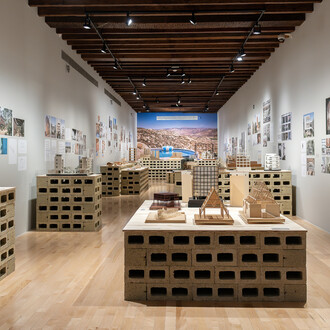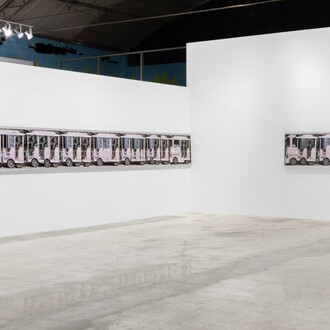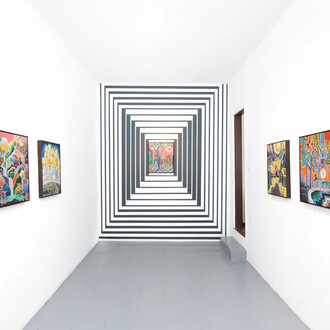Yves Klein (Nice, 1928 –París, 1962) has a pioneering role in the understanding of art as a unified adventure with thought and life, defining the spin of Modern art in the second half of the last century. The enormous influence of his short but prolific career explains that Klein is a authentic legend: one of the founding mythologies of contemporary history. In just eight years (1954-1962) Yves Klein addressed several vectors redeveloped by recent art: the constant reinvention of monochrome, the progression of artistic process strategies, the questioning of artistic materiality, the aesthetic play on economic life, and the defiance of social conventions on the work of arte and the exhibition space.
Through the exploration of monochrome Klein distances himself from the art of his time which in the mid -1950s was torn between lyrical abstraction and the threat of the return of representation. In 1955, when he had barely taken the path of art, he made paintings in different colors to conform the series Yves Peintures. In 1957 wich the double exhibition “Monochrome Proposals” at the Colette Allendy Gallery and the Iris Clert Gallery in Paris, Klein inaugurates what is known as his “blue period,”centered on the invention and multiple use of a single blue color and a binding agent, which Klein.
In this same context, Klein presents for the first time the installation Pure pigment. The works synthesizes some of the assumptions that will be fundamental in his later work: the possibility of achieving absolute color through the pure pigments of IKB and pictorial monochrome. It presupposes as well, a deconstructive notion of the painting and its matter, the artista does not need a brush to make a painting. For the artist, the pigment on the floor is a picture, radically modifies the viewer’s relationship with the vertical perception of the canvas. The depth the invention of a pictorial sensibility, and inmaterial reality that is not directly related to objects, but with a field of perception and with the enjoyment of emptiness as aesthetic product.
Since 1958, when Klein exhibition The Void in his inmaterial exhibition at the Iris Clert Gallery –an empty exhibition– his art moved forward to the questioning of the realtionship between art and physical objects. This adventure of dematerialization was marked with the image Leap pinto the Void (1960), where the artista offered his own flight as an expression of escape to the gravity of the world. Progressively the search for sensitivity for the inmaterial would dominate Klein’s work in the 60s.












